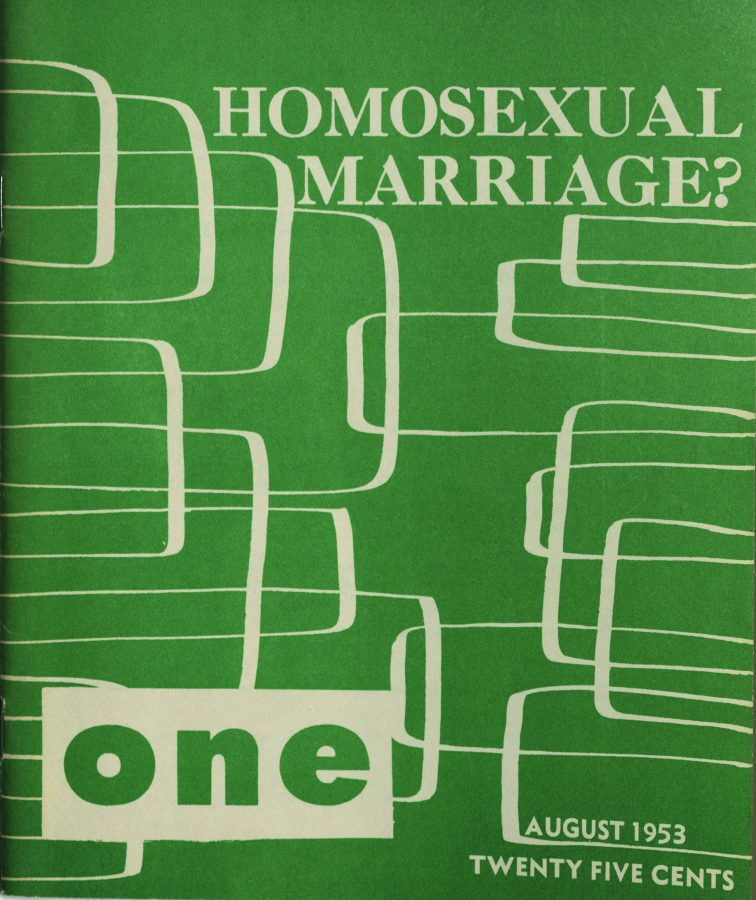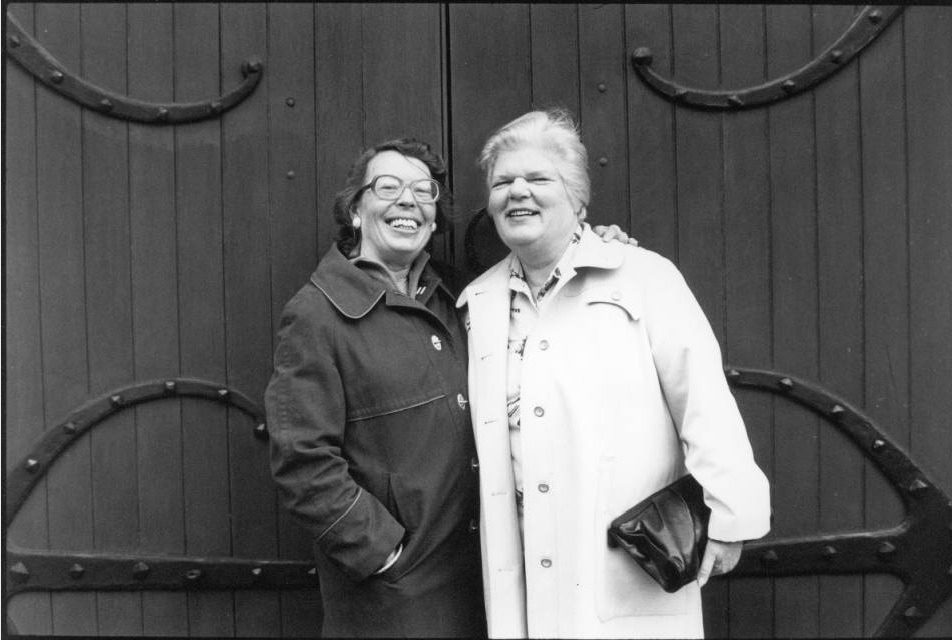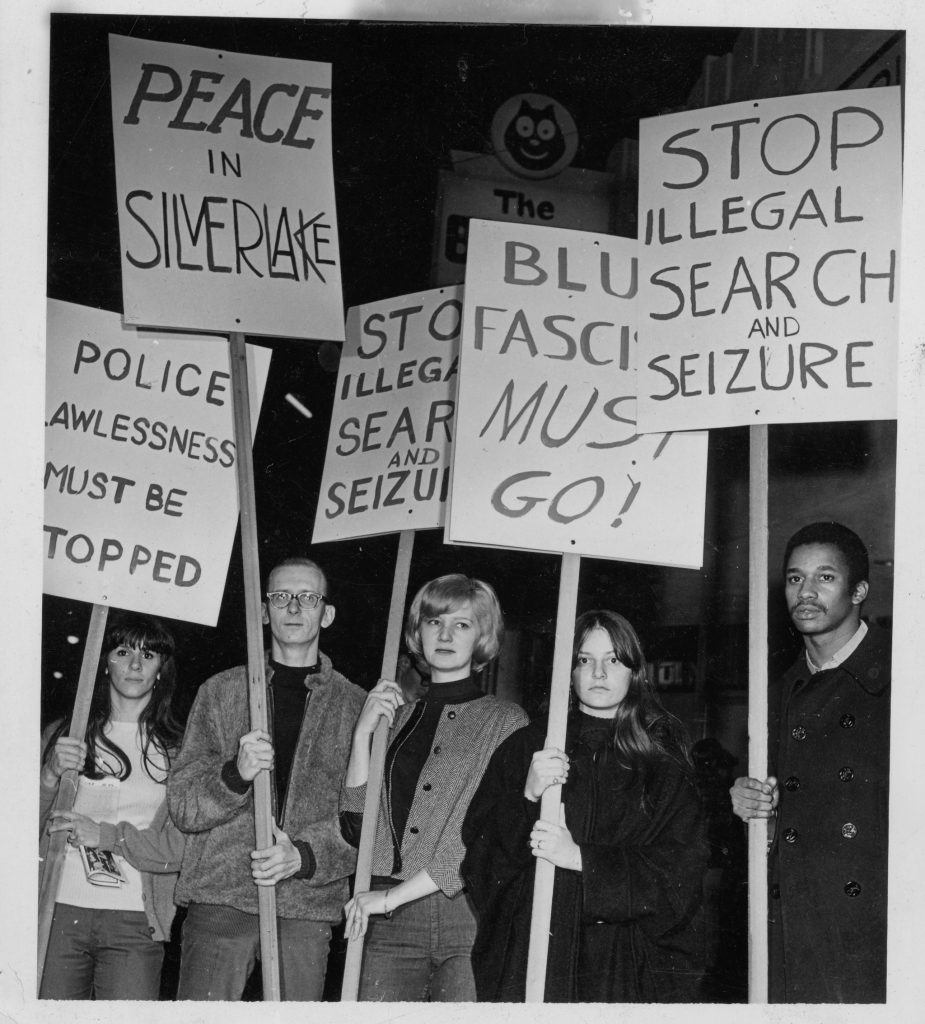Blog Post
Queer History Heroes You Need to Know

By Erik Adamian, ONE Archives Foundation
At ONE Archives Foundation, the longest continuously operating LGBTQ+ organization in the U.S., we remember and celebrate queer history every day; our K-12 education and exhibition programming chronicle the challenges, successes, rich histories, and heartfelt stories our queer ancestors have set forth, and that our vibrant queer community continues to make, now. But during October, Queer History Month, we have the unique opportunity to recount and honor some of the lesser-known histories of our community; stories that date to well before some of the best-known events in queer history, such as the Stonewall Rebellion.
We hope you enjoy a few of the stories from the 1950s and 1960s, a critical era for the LGBTQ+ civil rights movement.
The increased visibility of LGBTQ+ communities in the post-World War II 1950s ushered in a series of government crackdowns on LGBTQ+ civil rights; for example, the American Psychiatric Association classified homosexuality as a mental health disorder in 1952, and President Eisenhower signed Executive Order 10450 into law in 1952, banning gay and lesbian people from working for the federal government (also known as the Lavender Scare). Despite, and perhaps, because of said challenges, LGBTQ+ folks started to come together to create safe spaces for themselves, and to organize a united, robust front to support one another in their fight for civil rights.
The first sustained gay activist organization coalesced in 1950 when Harry Hay led the formation of the Mattachine Society in Los Angeles. Hay argued that gay and lesbian people were a minority group oppressed by a prejudicial society and that they needed to organize in order to challenge their unjust persecution. Over the following years, membership in the organization grew and several chapters formed around the United States.

In 1953, a group of members from the Mattachine Society in Los Angeles came together, founded ONE Inc. (ONE Archives Foundation today), and published a gay and lesbian periodical titled ONE Magazine. ONE Magazine was the first LGBTQ magazine to sustain production and reach a national audience. Because of its content, the magazine drew the attention of the FBI and the United States Post Office. In 1953 and again in 1954, the local postmaster confiscated the magazine, claiming its positive portrayal of homosexuality violated federal obscenity laws. But in the 1958 decision ONE, Inc. v. Olesen, the United States Supreme Court overturned the ruling, delivering the first Supreme Court decision in favor of LGBTQ+ rights.

Concurrently, in 1955, eight lesbians in San Francisco, led by Del Martin and Phyllis Lyon, joined together to found the Daughters of Bilitis, the first lesbian organization in the United States. The organization worked to provide a national support group for lesbians. The Daughters of Bilitis expanded to several chapters across the United States, each with varying levels of activist involvement. In 1960, the Daughters of Bilitis convened the first of a series of national lesbian conferences.

One of the unsung heroes of the LGBTQ+ civil rights movement was Ernestine Eckstein, an African-American lesbian activist, who served as the vice-president of the New York Chapter of Daughters of Bilitis. Eckstein was one of the first queer participants of color in the “Annual Reminder” picket lines, a gay rights demonstration organized outside Philadelphia Independence Hall from 1965-1969. Eckstein was also one of the first LGBTQ+ rights activists who advocated for the inclusion of transgender folks within the gay and lesbian civil rights movement.

It was also during the 1960s when some of the most important LGBTQ+ uprisings took place around the nation, led mostly by queer and trans people of color. During the Cooper Do-nuts uprising of 1959 in Los Angeles, the queer community revolted against the mistreatment of the predominantly Black and Latinx queer patrons of the café; at the 1965 Dewey’s Lunch Counter Sit-In in Philadelphia, Black gender-variant people and their allies utilized tactics from the Black Freedom Struggle to protest anti-transgender discrimination.

The 1966 Compton’s Cafeteria Riots in San Francisco are lauded as a critical uprising since transgender folks and their allies successfully resisted police brutality and helped catalyze the availability of social services for transgender people in San Francisco. In 1967, the Black Cat Riots were organized by an activist group named PRIDE (Personal Rights in Defense and Education), as a response to the raid of the Black Cat Tavern in Los Angeles, where undercover police officers brutally beat and arrested the LGBTQ+ patrons and employees of the bar. Our community’s courage is unbounded, and our stories, endless.

The aforementioned historical figures and events are only a few examples of the brave, decades-long activism and the incessant organizing that led to the 1969 Stonewall rebellion in New York City, which we recognize as a critical moment in queer history. It is through recognizing, honoring, learning, and telling our infinite and rich history that we can move towards an equitable and just community for LGBTQ+ folks. The lives and experiences of our queer ancestors equip us with the tools and wisdom necessary to secure protections for ourselves, affirm our identities, celebrate and thrive.
– Erik Adamian is the director of Education for ONE Archives Foundation, Inc. Join ONE Archives Foundation’s educational and cultural events and programs to learn more about LGBTQ+ history.